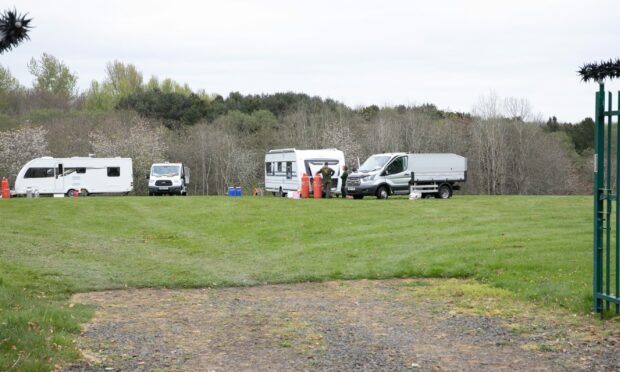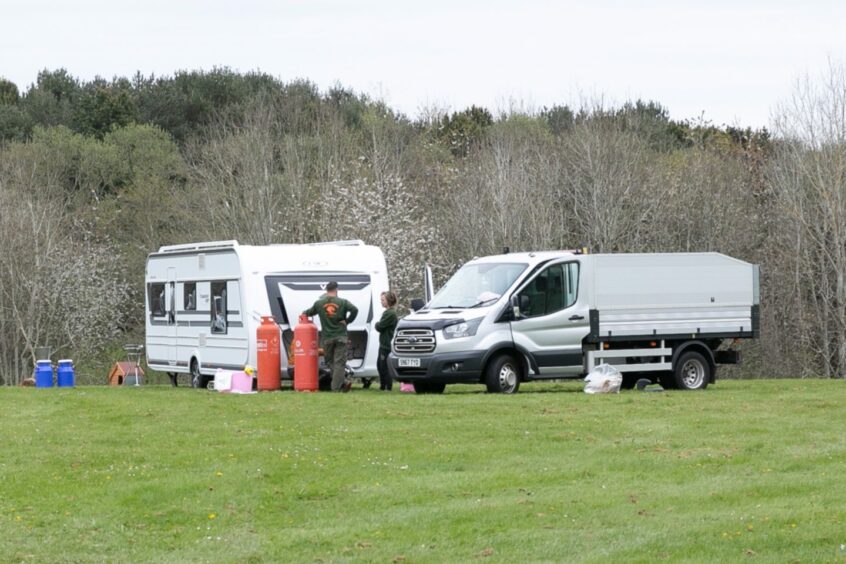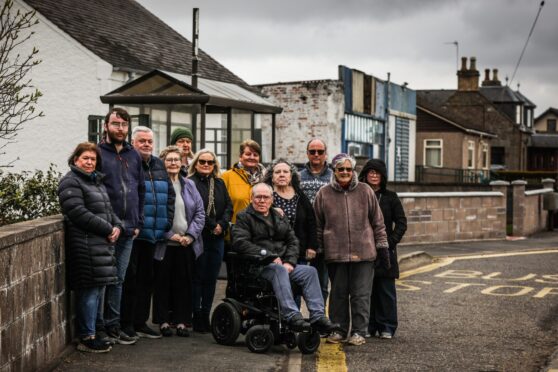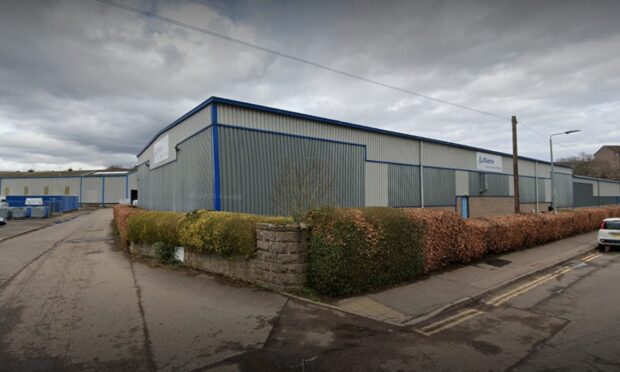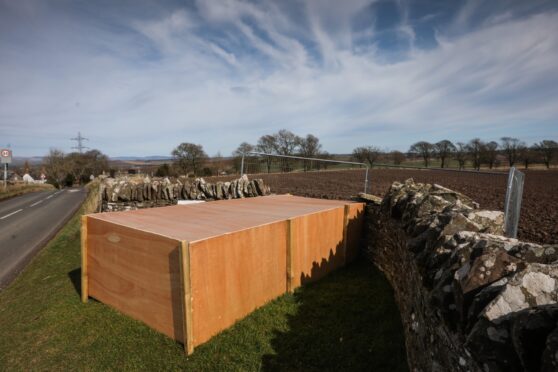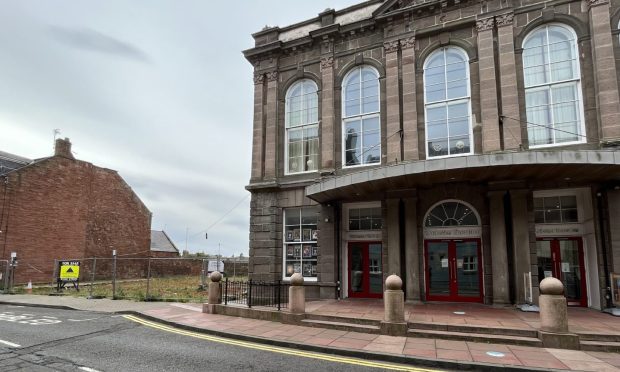Residents say they are concerned about the arrival of an “unauthorised” Travellers’ camp in Arbroath for the second year running.
Several vehicles, including caravans and trucks, are parked on land owned by Angus Council, next to the former Little Cairnie Hospital.
The land is near homes on Elmbank Crescent, with residents concerned about the potential impact of the camp.
One resident, who asked not to be identified, said: “They arrived on Sunday and have set up camp with their families and animals.
“It seems to be the same group that came here at the same time last year.
“By the end of that period there were about 20 caravans and they stayed for 10 days.
“We don’t see why we should have to put up with this yet again and are asking Angus Council to intervene, as it is their land.”
Last year the group was moved on amid residents’ complaints about noise, fires being lit and rubbish being dumped – as well as damage being caused to trees.
A spokesman for Angus Council said: “We are aware of the unauthorised encampment.
“Officers will be attending the area to engage with individuals there as we continue to monitor the situation, along with our partners agencies, in line with policies and procedures.”
What are the rules on Travellers’ camps?
According to the Scottish Government, an unauthorised Traveller camp is when “a person or group camps (in vans, trailers or any other moveable accommodation) on land that they do not own, and where they do not have permission to stay”.
It adds: “The Scottish Government has guidance on managing unauthorised camping by Gypsy Travellers.
“All local councils have their own policy for handling unauthorised sites.
“It’s their responsibility to balance the needs of the travelling community and the settled community in the area.”
When can Travellers be moved on?
It is up to a landowner to decide whether or not to take action to evict a group of Travellers.
The process for this involves notifying the group in writing about the need to move on and the reasons why.
If they refuse to move within the notice period, legal action can be taken through the sheriff court – but Travellers can also appeal a decision.
However, Shelter Scotland says groups should not be moved on from council-owned land provided it is safe to be there, the land is not used or needed for anything else, it is looked after and the rights of people living in the area are respected.
Where else can Travellers go?
Data published in 2019 shows there are 29 official Traveller sites at locations across Scotland.
That includes one in Angus (St Christopher’s in Montrose), which has 18 pitches, and one run by Dundee City Council (Balmuir Wood, near Tealing) with 20 pitches.
These provide facilities to Traveller groups legally, for a set fee.
How are Travellers protected?
The Scottish Government recognises Gypsy Travellers as an ethnic group.
“The Equality Act 2010 protects people who are recognised as a distinct ethnic group from being discriminated against on the grounds of ethnicity,” it says.
“The Scottish Government has made a commitment to make sure there is equality for Gypsy Travellers by integrating their needs into policies such as health, education and social services.”
The 2011 Scottish census was the first to include an option for Gypsy Travellers in the ethnicity category, with 4,200 people identifying themselves as such.
However, it is thought the numbers could be closer to 15,000-20,000 in Scotland.
